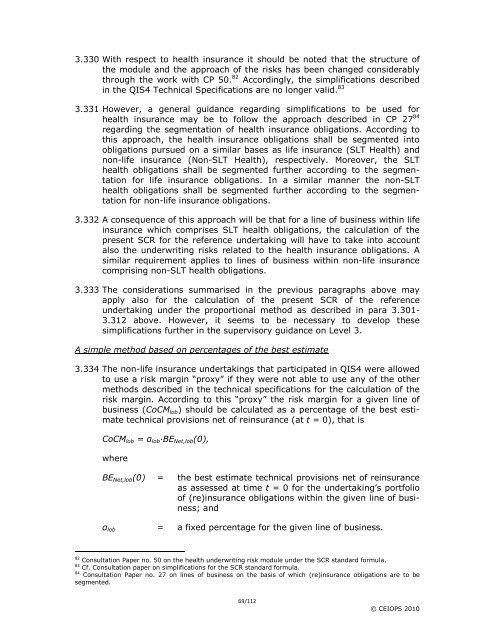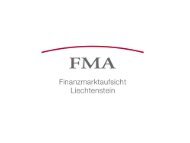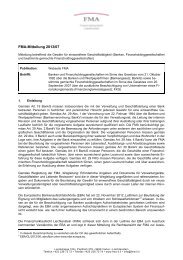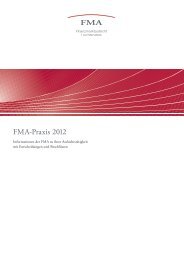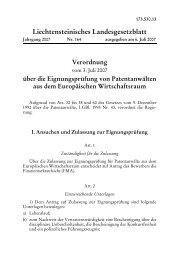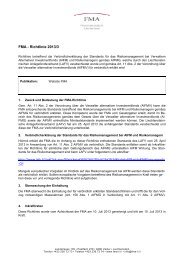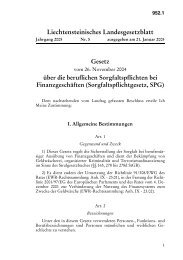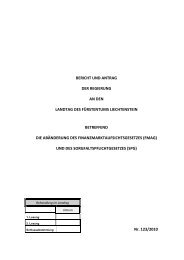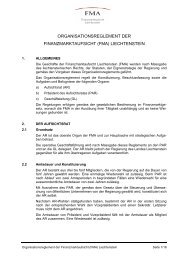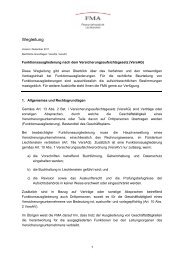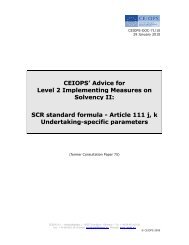CEIOPS' Advice for Level 2 Implementing ... - EIOPA - Europa
CEIOPS' Advice for Level 2 Implementing ... - EIOPA - Europa
CEIOPS' Advice for Level 2 Implementing ... - EIOPA - Europa
Create successful ePaper yourself
Turn your PDF publications into a flip-book with our unique Google optimized e-Paper software.
3.330 With respect to health insurance it should be noted that the structure of<br />
the module and the approach of the risks has been changed considerably<br />
through the work with CP 50. 82 Accordingly, the simplifications described<br />
in the QIS4 Technical Specifications are no longer valid. 83<br />
3.331 However, a general guidance regarding simplifications to be used <strong>for</strong><br />
health insurance may be to follow the approach described in CP 27 84<br />
regarding the segmentation of health insurance obligations. According to<br />
this approach, the health insurance obligations shall be segmented into<br />
obligations pursued on a similar bases as life insurance (SLT Health) and<br />
non-life insurance (Non-SLT Health), respectively. Moreover, the SLT<br />
health obligations shall be segmented further according to the segmentation<br />
<strong>for</strong> life insurance obligations. In a similar manner the non-SLT<br />
health obligations shall be segmented further according to the segmentation<br />
<strong>for</strong> non-life insurance obligations.<br />
3.332 A consequence of this approach will be that <strong>for</strong> a line of business within life<br />
insurance which comprises SLT health obligations, the calculation of the<br />
present SCR <strong>for</strong> the reference undertaking will have to take into account<br />
also the underwriting risks related to the health insurance obligations. A<br />
similar requirement applies to lines of business within non-life insurance<br />
comprising non-SLT health obligations.<br />
3.333 The considerations summarised in the previous paragraphs above may<br />
apply also <strong>for</strong> the calculation of the present SCR of the reference<br />
undertaking under the proportional method as described in para 3.301-<br />
3.312 above. However, it seems to be necessary to develop these<br />
simplifications further in the supervisory guidance on <strong>Level</strong> 3.<br />
A simple method based on percentages of the best estimate<br />
3.334 The non-life insurance undertakings that participated in QIS4 were allowed<br />
to use a risk margin “proxy” if they were not able to use any of the other<br />
methods described in the technical specifications <strong>for</strong> the calculation of the<br />
risk margin. According to this “proxy” the risk margin <strong>for</strong> a given line of<br />
business (CoCMlob) should be calculated as a percentage of the best estimate<br />
technical provisions net of reinsurance (at t = 0), that is<br />
CoCMlob = αlob·BENet,lob(0),<br />
where<br />
BENet,lob(0) = the best estimate technical provisions net of reinsurance<br />
as assessed at time t = 0 <strong>for</strong> the undertaking’s portfolio<br />
of (re)insurance obligations within the given line of business;<br />
and<br />
αlob = a fixed percentage <strong>for</strong> the given line of business.<br />
82 Consultation Paper no. 50 on the health underwriting risk module under the SCR standard <strong>for</strong>mula.<br />
83 Cf. Consultation paper on simplifications <strong>for</strong> the SCR standard <strong>for</strong>mula.<br />
84 Consultation Paper no. 27 on lines of business on the basis of which (re)insurance obligations are to be<br />
segmented.<br />
69/112<br />
© CEIOPS 2010


